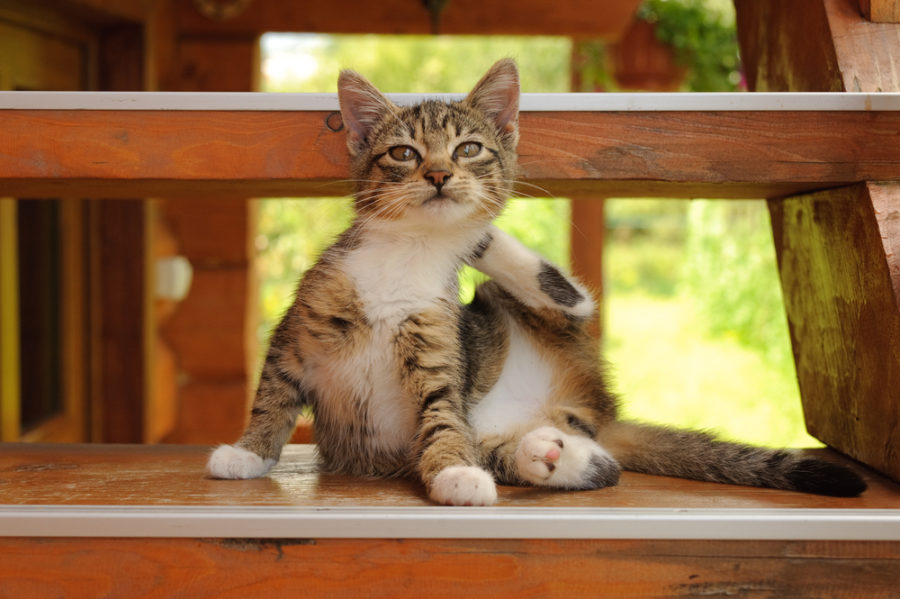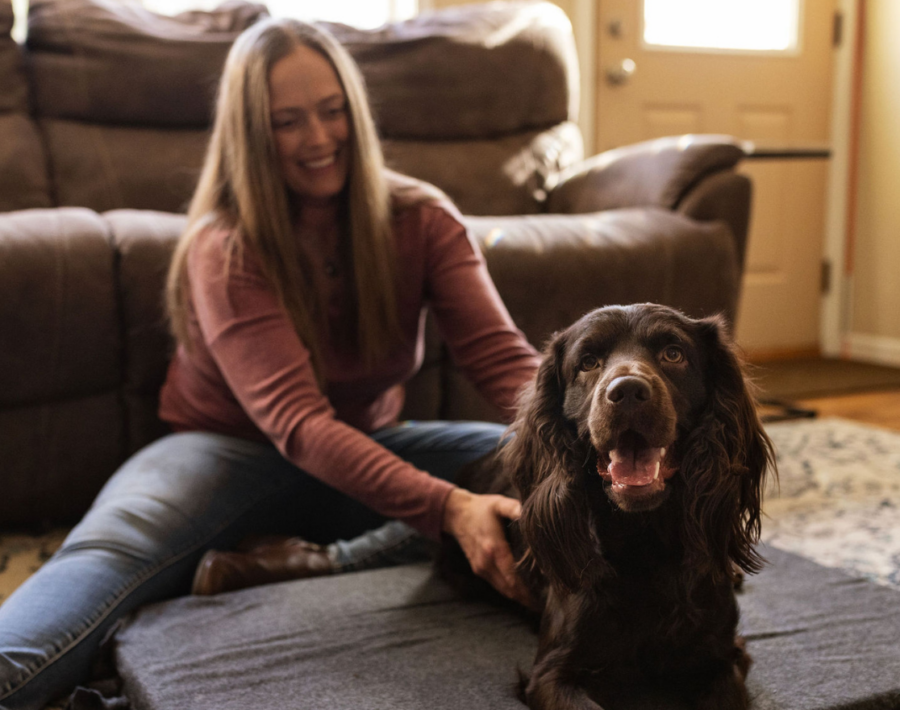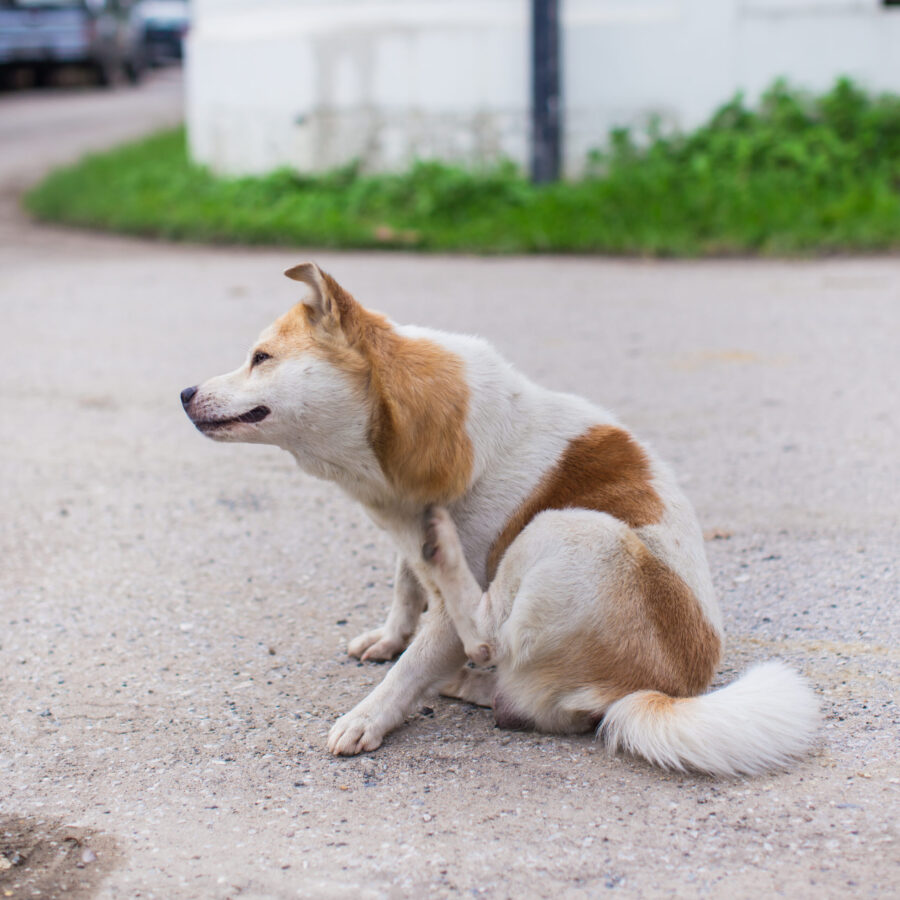Your cat can react to many different substances in his environment or food. This simple acupressure technique can help ease feline allergies and strengthen your cat’s immune system against potential allergens.
Scratching until his skin is raw, swollen eyelids, runny nose, coughing, sneezing, vomiting, diarrhea…these are some of the indicators your cat is suffering from feline allergies. His immune system is overreacting to something; an allergic reaction means he has a heightened sensitivity to some substance in his environment or food.
The “substance” to which your cat may be reacting is called an “allergen”. There are several general types:
- Inhalant allergens tend to be in the air. Cats tend to suffer seasonally due to inhalant allergens from pollens released by trees, grasses, flowers and weeds. Other inhalant allergens include cigarette smoke, perfumes, dust mites and molds – these can affect your cat year-round. Inhalant allergic reactions can affect his respiratory system and sinuses as well as cause skin irritation (atopic dermatitis).
- Flea allergens arise from flea saliva. If your cat is scratching himself and tearing away his fur, he could have a flea allergy. This is a common problem, but it can lead to a secondary infection, especially when there are open sores, and requires veterinary care as soon as possible.
- Contact allergens can cause skin irritation in a specific location due to direct exposure. Flea collars, household cleaning chemicals, fertilizers, new carpeting, and snow-melting chemicals are some of the possible irritants that may cause your cat to scratch in one location.
- Food allergens are most commonly chicken, beef, pork, fish, eggs, wheat, dairy products and soy. Food allergies often cause an extremely itchy rash. Usually the rash appears on the head, neck and back; even the cat’s eyelids can swell. Additionally, food allergens can cause digestive issues and respiratory problems.
All in all, your cat is not happy when he is experiencing an allergic reaction. The first step is to have him checked by a holistic or integrative veterinarian to be sure he’s actually suffering from feline allergies, and to see what recommendations he or she may have. The vet may be able to help you sort out the possible irritant(s) to which your cat’s body is reacting.
The solution could be as simple as introducing or increasing Omega-3 fatty acids, vitamins A and E, zinc, and/or biotin, a form of B vitamin, into your cat’s diet. These are commonly offered natural supplements that serve as a first line of defense against skin issues. If your cat has open sores or scabs from scratching his skin, your veterinarian will probably also provide a topical application to address a potential secondary bacterial infection.
Hopefully, you can also identify the specific allergen or allergens to which your cat is reacting, since doing your best to avoid the allergen(s) needs to be a part of his health regimen. For instance, if your cat is allergic to flea bites or cigarette smoke, eliminate them from his environment. Another example is to avoid foods and treats that have preservatives or coloring – a lot of cats are sensitive to these additives.
Consulting with your holistic veterinarian and removing any allergens is a good start to restoring your cat’s health. However, it would be even better to seek a long term solution to his compromised immune system.
A TCM approach
From both a conventional Western and Chinese medicine perspective, allergies are seen as a breakdown of the immune system. That is, the body is not able to cope with a particular allergen because the immune system is overreacting to a foreign substance. Strengthening your cat’s immune system seems like a logical way of helping him resolve his allergic reaction.
According to Traditional Chinese Medicine (TCM), when the natural internal balance supporting the animal’s defenses is compromised, allergens can cause reactions. Hence, it’s extremely important to build and strengthen the cat’s immune system while eliminating the pathogenic issue that is compromising it.
A TCM approach to resolving or managing feline allergies of any type is well-rounded and involves the animal’s lifestyle. The cat’s lifestyle requirements include: making sure the food he’s eating is appropriate for him; that he’s getting enough rest and exercise; and that his social needs are being met.
Adding acupressure to a balanced lifestyle will provide another facet to resolving your cat’s condition and strengthening his immune system to prevent further allergic reactions.
Feline acupressure to strengthen the immune system
You can help your companion overcome feline allergies by building up his immune system through acupressure. Four acupoints (see chart for their locations) are known to stimulate and strengthen the immune system:
- Large Intestine 11 (LI 11) – Enhances the immune system, reduces itching (pruritus), benefits skin disorders and balances respiratory conditions.
- Large Intestine 4 (LI 4) – Used for allergic dermatological issues and benefits the immune system.
- Lung 7 (Lu 7) – Benefits skin issues, especially abdominal itching, supports lung function, and strengthens the immune system.
- Stomach 36 (St 36) – Helps prevent allergies. Stomach 36 is used to enhance the movement of energy and blood throughout the cat’s body, ensuring good health.
Stimulating these four acupoints every four or five days can help resolve current reactions and avoid allergies in the future. Combine this acupressure session with your holistic veterinarian’s recommendations, a balanced lifestyle, and no exposure to the offending allergens, and you will have a much happier and more comfortable cat.
Two finger technique


There are two different techniques you can use to stimulate the acupoints. The two-finger technique is effective on cats.
First, place one hand on your cat wherever you and he are both comfortable. Then place your middle finger on top of your index finger and apply light pressure on the acupoints shown in the chart, staying at each one for a slow count of 30. Remember to work the points on both sides of your cat.
Your cat may express energy releases such as yawning, stretching, licking, passing air, or even falling asleep. If your cat exhibits any discomfort while a point is being worked, move to the next, or stop and offer the session another time.









